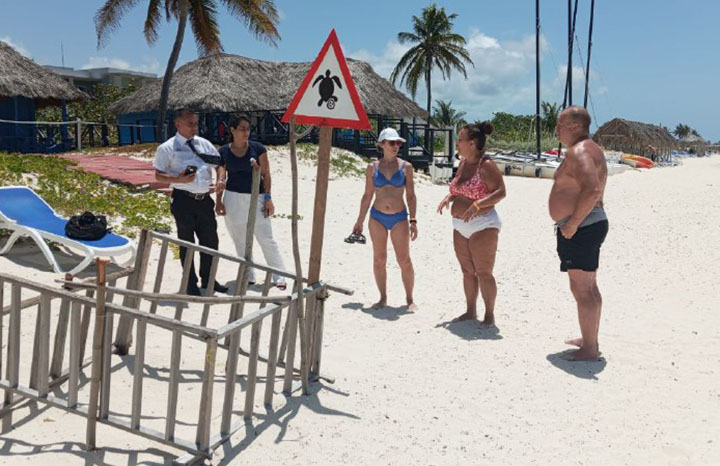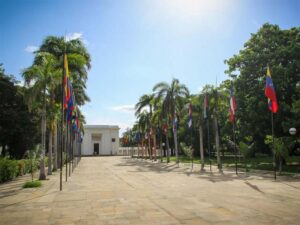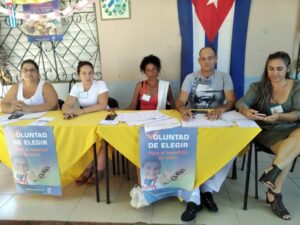The fine white sands and turquoise waters of Playa Las Coloradas in Cayo Coco now offer an additional attraction, particularly for nature lovers: a turtle nesting on the beach segment adjacent to Meliá Costa Rey Hotel.
Demarcated and signposted by staff from this sustainability-promoting tourist facility – linked to the International Sustainable Tourism Project in Cuba – the area is unlikely to escape tourists’ notice. Visitors frequently approach and inquire with on-site staff.
During a routine workday, Michel Balmaseda Ávila, Quality Management Specialist at the mentioned hotel in Jardines del Rey, and Evelyn Marichal Arbona, Associate Researcher at the Centre for Coastal Ecosystems Research (Ciec), inspect the area. This spot has become noteworthy as the first recorded turtle nesting in a tourist-use zone of the destination.
Biologist Marichal Arbona, also coordinator of the International Sustainable Tourism Project in Avilanian territory, explained that while rare nesting events previously occurred in Ciego de Ávila’s northern cay area, these were exclusively in non-anthropised coastal stretches, primarily within protected zones.
The International Sustainable Tourism Project promotes biodiversity conservation and climate change adaptation across eight tourist facilities in Jardines del Rey.
Against this backdrop, the turtle nesting – recently sighted by a security worker – motivates coastal conservation efforts at this hotel. The establishment is preparing to certify its environmental management system, evidencing its commitment to green tourism aligned with global trends.
Shortly after midday, the sun radiates intensely on the coast. Several guests remain on the beach, with three approaching Evelyn and Michel to inquire about the protected sandy area. The story, widely shared within and beyond the hotel in recent days, is recounted once more.
In fluent French, the hotel employee explains to guests that a turtle nested here overnight between 13-14 June. They detail necessary protective measures safeguarding the eggs until hatching – an event generating high anticipation among guests and staff.
Based on descriptions, Marichal Arbona confirmed the nest likely belongs to a loggerhead turtle. This species typically deposits eggs about three metres from the high-tide line, with an incubation period usually lasting 60 days.
She noted this isn’t the first turtle nesting in Jardines del Rey, though it remains uncommon in zones with tourist development and facility lighting. Significantly, this exact spot represents the least illuminated section of Meliá Costa Rey’s beachfront.
Turtles generally lay dozens of eggs, though not all hatch. High mortality rates reflect the species’ survival strategy: hatchlings mature slowly and face numerous predators upon entering the marine environment. Scientists estimate only 2% survive to adulthood.
Evelyn explained female turtles typically return to their natal beach to nest, demonstrating fidelity to their birthplace. They emerge ashore, excavate a hole with their hind flippers, deposit eggs, then cover them with sand. Sand temperature determines hatchling sex: warmer sands yield females, cooler sands males, per scientific literature.
In her 14 years as a biologist and researcher at Ciec, this marks the first turtle nesting she has witnessed firsthand, though she knows of others occurring in beach segments of the West-Central Ecological Reserve in Cayo Coco and one years ago at Playa Larga.
Avilanian northern cays are considered low-frequency nesting zones. In Cuba, nesting occurs more commonly and repeatedly in southern areas, particularly within Jardines de la Reina Archipelago.
Successfully safeguarding this presumed loggerhead nest – based on eyewitness accounts and nest position – is a priority for Meliá Costa Rey staff, particularly those working beachside. Beyond preserving the site, they maintain cleanliness, remove debris, and control night-time lighting (which disorients turtles, especially emerging hatchlings).
Staff conduct frequent patrols and monitoring alongside Ciec researchers and specialists to protect the nest and address any incidents. This event also presents an ideal opportunity to raise awareness among tourists and operators about sea turtles’ importance and the consequences of habitat disturbance.




